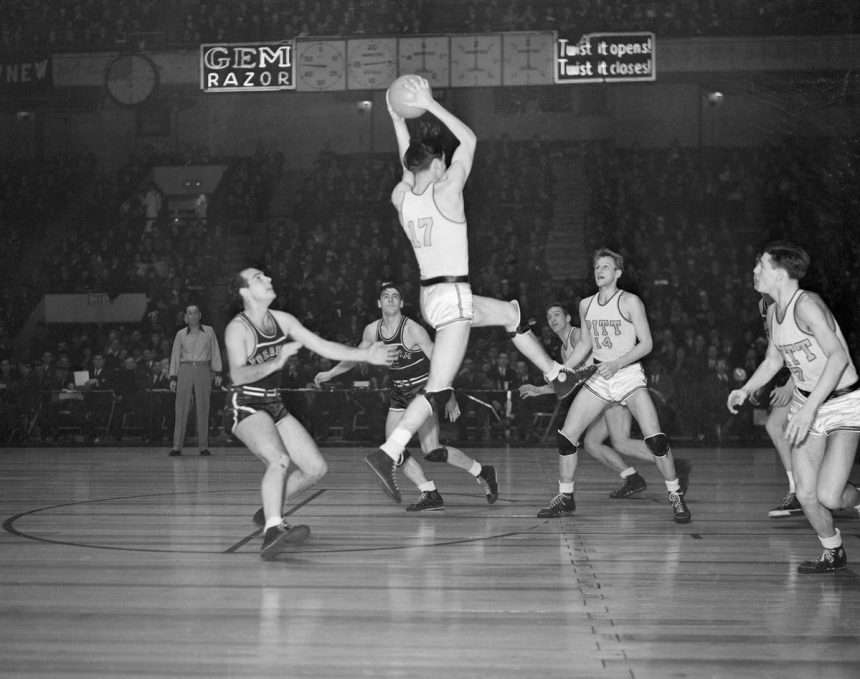The Supreme Court recently struck down racial preferences in college admissions. Wesleyan University responded, joining Amherst, Johns Hopkins, Carnegie Mellon, MIT and others, by ending legacy admissions. But if colleges really wanted to return some semblance of equity in college admissions, eliminating the advantage of athletic recruits would have a much greater impact.
Bowen and Levin’s seminal 2003 book, Reclaiming the Game, states that athletes are twice as likely to be admitted to an elite college as legacies and four times that of under-represented students. Since this study came out, the number of recruited athletes has increased 45%, compared to overall college growth of 33%. According to the NCAA, 61% of athletes are white, 65% at the Ivy League and 79% at the 11 colleges of the New England Small College Athletic Conference (NESCAC). 100% of recruited sailors this past year were white, as were 90% of hockey players and 85% of lacrosse players. Only 4% of women’s soccer players and under 2% of women’s field hockey, ice hockey and rowing athletes are Black.
Almost half of Harvard’s recruited athletes have a family income over $250,000. One in eight are in the top 1% (income over $600,00) compared to 1 in 20 of those under $25,000. The costs to families can be enormous. One estimate is that the average club costs for a lacrosse player are over $8000 a year. 20% of high school athletes’ families pay $1000 a month. Youth sports are a $19 billion industry.
The advantage in admissions cannot be overstated. A former Penn admissions officer commented that ”certainly no one in their right mind could say that being a recruited athlete is not on the Mount Rushmore of [admissions advantages].” A NY Times article quotes Philip Smith, a former dean of admissions at Williams College: “Athletic recruiting is the biggest form of affirmative action in American higher education, even at schools such as ours.”
The admission process for athletes is inherently different. My college process was typical for a small college athlete. I was a recruited wrestler at Swarthmore, an elite, liberal arts college. I submitted my application a day before the deadline. Two days later my coach called informing me that I could not tell anyone, but that I was going to be admitted. That was barely enough time to peruse my test scores and transcript and certainly not enough to even consider my other activities, my recommendations or my essays.
At the Ivy League, instead of a call from the coach, recruited athletes get “likely letters’ ‘ with virtually assured admissions if the student applies early decision or action. According to an article in The Atlantic, Harvard ranks its applicants on a 6 point scale. Athletes with 4’s are admitted at a 70% rate. Others with that rating .076, 1000 times lower. At 19 elite colleges, recruited athletes are 30% more likely to be admitted than non-athletes and at the NESCAC schools, the boost is almost 50%.
Colleges promote their athletics for a variety of reasons. Boston College saw an enormous increase in applications following Doug Flutie’s Hail Mary pass winning the football national championship, as did Georgetown following Patrick Ewing leading them to a basketball championship. A study in Journal of Intercollegiate Athletics found that many small colleges use athletics to maintain enrollment. As many all-women’s colleges went co-ed, athletics were an efficient way of boosting male enrollment. According to the NCAA, though, all but 20 colleges lose money on athletics. Rutgers athletics ran up a $73 million deficit in the past fiscal year out of a total expenditure of $240 million. The highest paid public employee in two thirds of the US states is a college football coach. Greg Schiano, the coach of Rutgers, is contracted to earn $32 million over the 8 years of his contract. His assistants earned over $5 million this past season. This may be one reason why Rutgers in-state tuition is 50% higher than the national average for public universities.
College athletes significantly underperform compared to their peers. William G. Bowen’s study found that athletes’ test scores average about 100 points lower and 81% of recruited athletes in the Ivy League graduated in the bottom third of the class. In contrast to legacies and under-represented students, college athletes’ GPA and class rank have been steadily decreasing. This seems unrelated to the time demands of the sport, for other high demand activities, such as music, do not have the same negative academic effect.
Colleges athletics give an enormous boost in admissions, and except for the one-third of athletes in basketball, football and track, this advantage is conferred to predominantly white, wealthy and suburban students. Athletics cost many families thousands of dollars a year in club and travel costs and are a significant factor in raising college costs. They also have no marked effect of the socioeconomic composition or the racial diversity of the schools. Interestingly, though, athletes graduate at the same rate as non-athletes and consistently earn more money after graduation.
It is time to think about the net effects of college athletic recruiting and ideas for changing the process. Except for NCAA Division I basketball, football and track, America, like the rest of the world, should select athletes from those students who attend the school. Athletes should be given the same consideration in the admissions process as other students, like musicians, who dedicate themselves to their craft. Coaches should earn no more than professors or administrators and athletic budgets, particularly at public colleges, should be reset to approach that of other extracurricular pursuits.
In 1852, the first intercollegiate athletic event was the Harvard-Yale rowing regatta. Since then, athletes have dedicated their blood, sweat and tears to wins on the athletic fields and arenas and in admissions offices throughout the country. Sports build positive characteristics in many students, including dedication, perseverance and teamwork. They also are responsible for pushing kids too hard, too fast and too young, putting a strain on family finances and severely distorting the college admissions process, giving privilege largely to the already privileged.
Read the full article here









